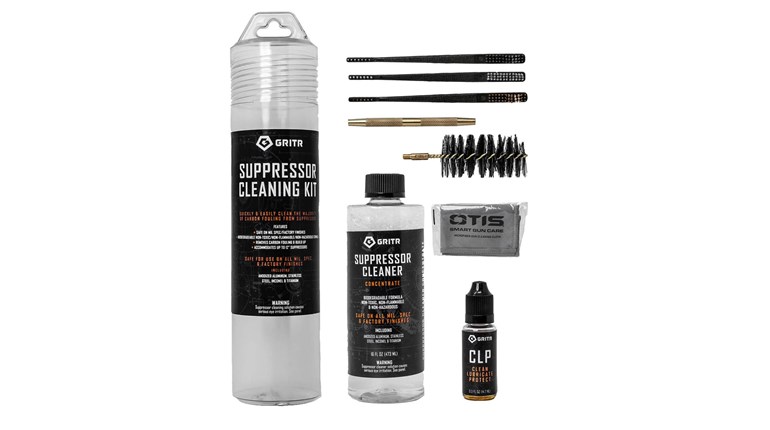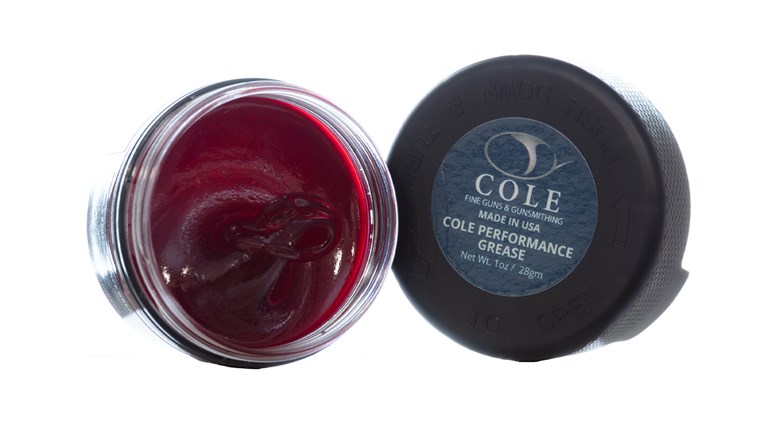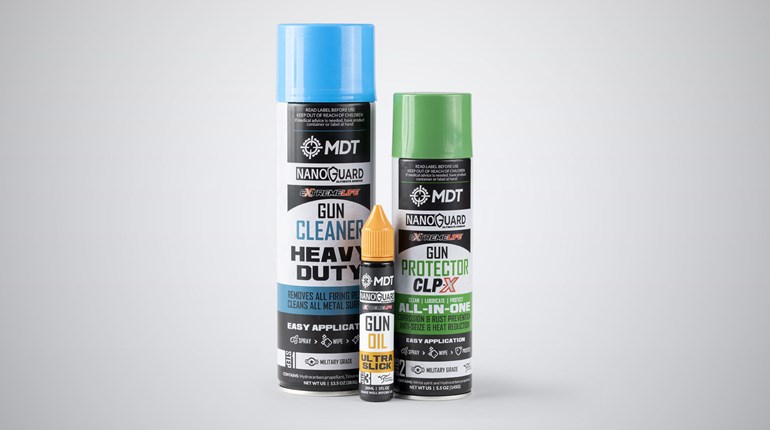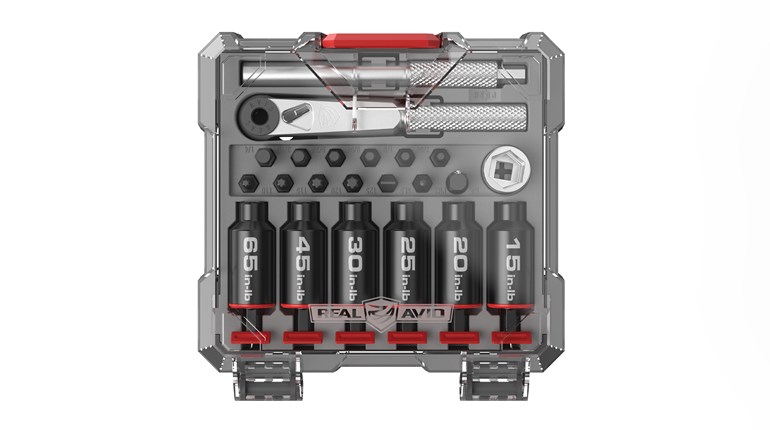
Once you settle on a carry firearm, a close second to learning how to use it well and safely is learning how to care for it well and safely. Experts might reasonably disagree on a hierarchy for such care, but Carry Life is going to take a look at two that aren’t as easy as they may at first appear. The first is obvious: Like any mechanism, your carry firearm needs to be periodically cleaned and lubricated in order to operate as required. The second is more subtle and technical–the physical condition of your defensive ammunition–and we’ll come back to that in Part II. Both are critical because, done incorrectly, your defensive firearm may not function remotely as you expect when you need it most.
We start with good news: Such cleaning and lubrication have never been easier. Chemicals, tools and other supplies mate well with modern firearms, finishes and take-down regimes to facilitate rapid, thorough maintenance. Here, we recollect a long-ago Glock Armorer’s class: “If it takes you longer than 10 minutes to clean your pistol, you’re wasting time.” By and large, that’s true. Even after lengthy training sessions—lots of rounds, lots of carbon, etc.—we can generally be ship-shape again in very short order. (A significant factor here can be your choice of ammunition, as some is simply cleaner than others.)
However dirty your pistol is, it’s crucial to start the process correctly—with an empty gun. Note that empty means no magazine in a semi-auto, nothing in the chamber (and checked in that order), or each and every chamber of the cylinder visually checked (in a revolver). We have no live ammo anywhere on our bench for sure, and it’s better to have none in the room. Just sayin’. However dirty your pistol is, it’s crucial to start the process correctly—with an empty gun.
We’ll save specific recommendations about cleaning fluids/materials for another occasion, but do have some general observations now. First, use protective gloves: There’s no reason to get this stuff on your skin. Second, we don’t prefer clean/lube/protect formulations—these are separate jobs, and optimized by using a cleaner to clean, and a lubricant-protectant to, well, you get the idea.
Third—and our central point—is easy does it, whatever you use. Over-application of cleaners is messy and costly, and some are quite aggressive. You won’t like what happens when they get on things that aren’t designed to resist them. Fiber optic sights are a great example of something easy to wreck with solvents/cleaners. Always remove cleaners to the greatest extent you can prior to lubricating.
The same applies, pardon the pun, to lubricating and protecting products: Less is more when it comes to avoiding problems like:
Stains and damage – You can ruin cover garments or other clothing (and create problems elsewhere). That this one seems kinda obvious, we grant. It’s also a mistake you’ll not likely repeat, but profoundly annoying all the same, yet we see and hear of it with surprising regularity.
Attracting contaminants, especially fibers/hairs. On a modest scale, that’s not likely a problem for a semi-auto, but it’s a potentially disabling risk for a revolver—tangle up the pawl/hand just once, and you’ll never forget it. This is more of a worry if you pocket- or purse-carry, as the bottoms of both can collect problematic debris of all kinds.
Attracting contaminants, part II. You really want to make sure the bore of your pistol is bone dry: If your luck is bad enough, surprisingly small pieces of schmutz that are attached inside the bore via lubricants can result in an obstruction. But if they’re hard enough, guess what happens next? (A hint: boom!) If your holster for pocket/purse carry is closed-bottomed, it helps prevent this relatively unlikely but devastating issue. This is a special case of a more general caution for pocket carry—the other stuff in pockets. These can be a dangerous problem in the bore or inside the trigger guard.
Most important, lots of lubricant is not necessary on most modern firearms. When we have our review hat on, we always run pistols “dry” as part of our testing as a nod to any potential carry role. This is never a multi-hundred round torture test to be sure, but several magazines/cylinders at speed. We deem this merely prudent: A handgun that has to run very wet is probably disqualified from carry for the reasons above—or any other serious use, we might argue—by that characteristic alone. Most pistols run just fine on the dry side. If you’re doing intense drills, add more lubrication for the term of your training session.A handgun that has to run very wet is probably disqualified from carry.
So how much is enough? Actually, it’s pretty straightforward, and surprisingly generic. In a striker-fired autoloader (S&W M&P/Shield, Glock, Springfield XD/S/Mod2s, SIG 320c, etc.) eight small drops will do it. One for each rail fore and aft, one on the upper and lower lock points (usually chamber/slide “shoulder,” and the locking block or takedown lever), and two even tinier drops, one the trigger bearing surfaces and a final one at the barrel/slide interface (muzzle end). Check our recommendations against your owner’s manual of course, but even there our point stands: Be sparing in lubrication.
1911s follow much the same oil positions, though their slide/frame interface is different (as is any “fully” railed pistol): Put one largish drop—enough to span the five surfaces—a quarter of the way in from either end of the rails, and on both sides. Lock-up surfaces are the same as before. Triggers are often pretty well sealed in these pistols, so skip that one; put the last drop on the bushing/barrel junction.
Now, hand-cycle your pistol a dozen or so times and look for any escaping lube. Wipe any excess away, and repeat until you stop seeing excess.
If your carry firearm is a revolver, your task is simpler yet. A tiny drop on the ratchet, both ends of the cylinder spindle (underneath the ejector), and the interior of the crane assembly. Some revo folks oil the cylinder stop too, but this will certainly result in a little oil on the surface of the cylinder. And while it’s tiny, it can still get where it’s not wanted. That’s a call you’ll have to make. Check our recommendations against your owner’s manual of course, but even there our point stands: Be sparing with lube.
A last thought about the cleaning part of carry maintenance: We’ve repeatedly recommended the need for routine training with a carry arm. This has an obvious impact on the maintenance cycle. If you’re practicing/training twice a month (the minimum we’d recommend), you can clean after each session and be good to go. It’s only 10-15 minutes, remember, with practice.
If you train more frequently than this, we’d say a) good on you, and b) unless your training is heavy, you may (still) not need a detail clean more often than twice a month. Two caveats here: Any performance issues immediately call for a cleaning, and may mean your maintenance cycle has to “up-tempo” in order to keep things running well (though this would alarm us—modern carry guns should not be so finicky). The second is be aware that shooting will soil the outside of your firearm in a way that can harm your clothing, so be prepared for some care after every practice. Your cummerbund and good white shirt will eventually thank you.
If you train less frequently, however, you still need to carefully inspect your carry firearm a minimum of once a month, and the best way to do this is by cleaning it. This will keep your pistol ready for a real—if unwelcome—defensive need, and has the highly desirable side effect of becoming a habit.
Now Carry on.


































